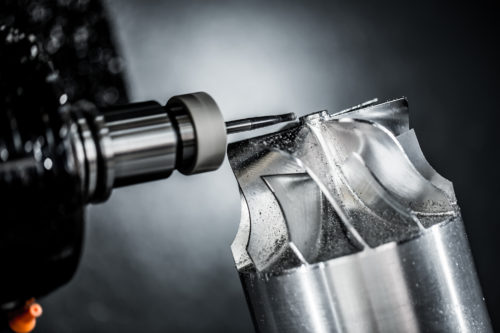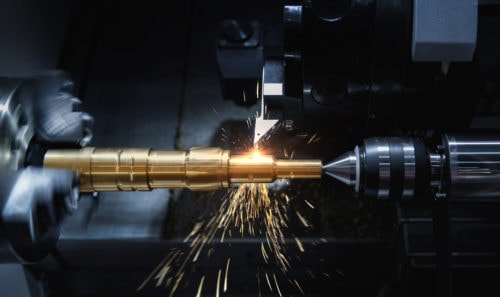An Intro to the CNC Machining Process
Computer numerical control (CNC) machining is a subtractive manufacturing process that uses computer-guided machinery and tooling. It is similar to manual machining processes in that it employs various tools to remove excess material from the workpiece (i.e., the blank) to achieve the desired shape and size. The main difference is that the motion and action of the tools and/or the workpiece are controlled by a computer program rather than a human operator. Key advantages include better accuracy, precision, and speed, all of which benefit the manufacturer and end user.
The term “CNC machining” is a broad term that encompasses all of the machining processes that utilize computerized machines and tools. The following blog post provides an overview of some of the most commonly utilized ones.
CNC Milling
CNC milling is a machining process that uses computerized multi-point cutting tools to shape the workpiece into the desired form and size. During CNC milling operations, the tool rotates as the CNC milling machine feeds the workpiece toward it. Generally, the feed direction is the same as the direction of the tool’s rotation. 
The CNC milling process can be used for a number of machining operations, such as:
- Face milling: a process that produces shallow, flat surfaces or flat-bottomed cavities
- Plain milling: a process that can produce deep cuts or wide cuts, depending on the type of cutter employed
- Peripheral milling: a process that produces deep cavities (e.g., slot, threads)
- Angular milling: a process that produces angular elements (e.g., chamfers, grooves, serrations)
- Forming milling: a process that produces components with curved and flat surfaces or completely curved surfaces
CNC Drilling
CNC drilling is a machining process that uses computerized multi-point drill bits to create smooth or threaded holes in the workpiece. During CNC drilling operations, the cutting tool generally rotates and moves perpendicular to the surface of the stationary workpiece, producing vertically aligned holes. However, specialized machine configurations and workholding devices can be utilized to create angular holes.
The CNC drilling process can be used for many machining operations, such as:
- Counterboring
- Countersinking
- Reaming
- Tapping
CNC Boring
CNC boring is a machining process that enlarges the size of existing pre-drilled, forged, or cast holes in the workpiece. During CNC boring operations, excess material inside of the target hole is carefully removed. This continues until the hole is the right size/shape, of the right surface roughness, and/or in the correct position.
The CNC boring process can be performed by various machining units, such as lathes, jig borers, or boring mills. Larger workpieces are typically machined using a boring mill, while smaller components are generally machined using a lathe.
CNC Turning
CNC turning is a machining process that uses computerized single-point cutting tools to remove material from the workpiece. During CNC turning operations, the workpiece rotates while the machine feeds the tool along its surface in a linear motion to remove excess material around its diameter. The material removal continues until  the component has the proper diameter(s). The result is generally a cylindrical component with or without external and internal features (e.g., slots, tapers, or threads).
the component has the proper diameter(s). The result is generally a cylindrical component with or without external and internal features (e.g., slots, tapers, or threads).
The CNC turning process can be used for a variety of machining operations, such as:
- Boring
- Facing
- Grooving
- Thread cutting
Thread Cutting on CNC Lathes
Thread cutting is a machining process that uses an indexable threading insert in a CNC lathe to produce threads. During thread cutting operations, the CNC lathe controls the uniformity of the thread created by maintaining a programmed feed rate. The shape and size of the thread are determined by the shape and size of the threading insert.
CNC Counterboring and Countersinking
CNC counterboring and countersinking are specialized machining processes that are performed at the top of an existing hole. During counterboring and countersinking operations, the machine tool removes material at the hole opening to create space for the fastener (e.g., screw or bolt) so that it is flush with the workpiece surface when fully inserted. A countersink is conical, while a counterbore is cylindrical and usually larger in diameter than the hole’s bore.
Trade Tech: Your CNC Machining Experts
Want additional information on the different types of CNC machining processes? Ask the experts at Trade Tech! As a premier machining service provider, we can answer any questions you may have about these manufacturing methods. Additionally, if you’re looking for a partner for your next CNC machining project, we are here to help. We offer a range of capabilities, including milling, drilling, boring, turning, thread cutting, counterboring, and countersinking. Request a quote to discuss your project specs with one of our representatives.
